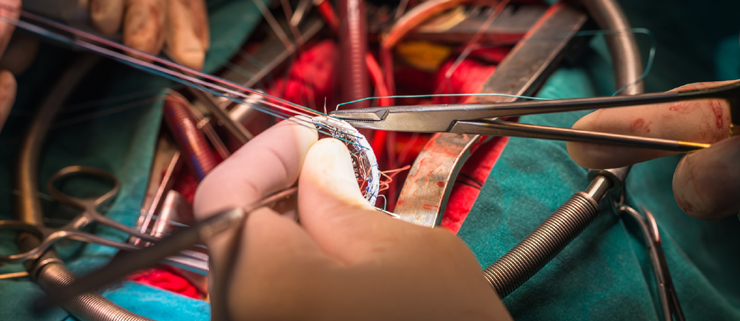Transplant
A kidney transplant is performed n to place a healthy kidney from a living or deceased person into the body of a person whose kidneys no longer function. When the kidney loses its filtering ability, the toxic fluids and wastes start accumulating in the body which can result in kidney failure and increased blood pressure. Secondary diseases include Diabetes, High blood pressure, chronic Glomerulonephritis, Polycystic kidney disease. A kidney transplant is not a cure for a failed kidney, the patient still needs to be regularly medicated to ensure that the new kidney does not get rejected. Due to the shortage of healthy kidney donors, a patient might have to wait on the waiting list for years before they could get a healthy kidney. Hernia, internal bleeding, chronic pain, graft rejection, bladder infection, etc are some common side effects of a kidney transplant.
A lung or a pulmonary transplant is a procedure when one or both of the defected or diseased lungs are replaced by a healthy set of lungs, usually from a deceased donor. A lung transplant is not performed until plenty of medications and other procedures have been tried to restore the health of the lung/lungs. In some extreme cases, the lung is transplanted along with the donor’s heart. Unhealthy lungs can reduce the amount of oxygen intake in the body. Diseases that prevent this are cystic fibrosis, pulmonary fibrosis, pulmonary hypertension, chronic obstructive pulmonary disease, etc. Even after successful surgery, there is always the risk of rejection and side effects may include weight gain, facial hair, stomach problems etc.
A heart transplant is to replace a non-functioning heart with a healthy one and it is performed by a cardiac surgeon. It is done due to weakening of cardiac muscles, heart valve diseases, congenital heart diseases, ventricular arrhythmias or conditions that can’t be controlled by medication. However, people with advanced age, having multiple medical conditions, active infection, etc might not be good candidates for a heart transplant.
To remove a non-functioning liver, transplant surgeons replace it with a healthy functioning liver from a donor. The liver is an important organ that synthesizes proteins and breaks down nutrients from food, liver failure can result in viral hepatitis and cirrhosis. A liver transplant is only performed when all other forms of treatment are ruled out and the patient is healthy enough for surgery. The patient must be at least 6 months sober before the surgery. Once you get evaluated by a transplantation centre you get placed on the national waiting list for a deceased donor.
A bone marrow transplant or a stem cell transplant is a medical treatment that replaces bone marrow with healthy cells. It is used to treat diseases like cancer like leukaemia, myeloma, lymphoma, and immune and auto-immune diseases that might affect the bone marrow. The stem cells are those cells that make copies of themselves and convert them into whatever cells the body might need. These cells are contained in a soft tissue called bone marrow, which is found in the centre of most bones. Autologous transplant takes stem cells from a patient’s own body, the stem cells are removed from the body prior to the beginning of the treatments for cancer. Because the chemothera[y can further weaken the stem cells and the immune system. Once the chemotherapy is done the healthy stem cells are returned to the body. Allogeneic transplant is when the stem cells come from a donor after chemotherapy or the radiation therapy

